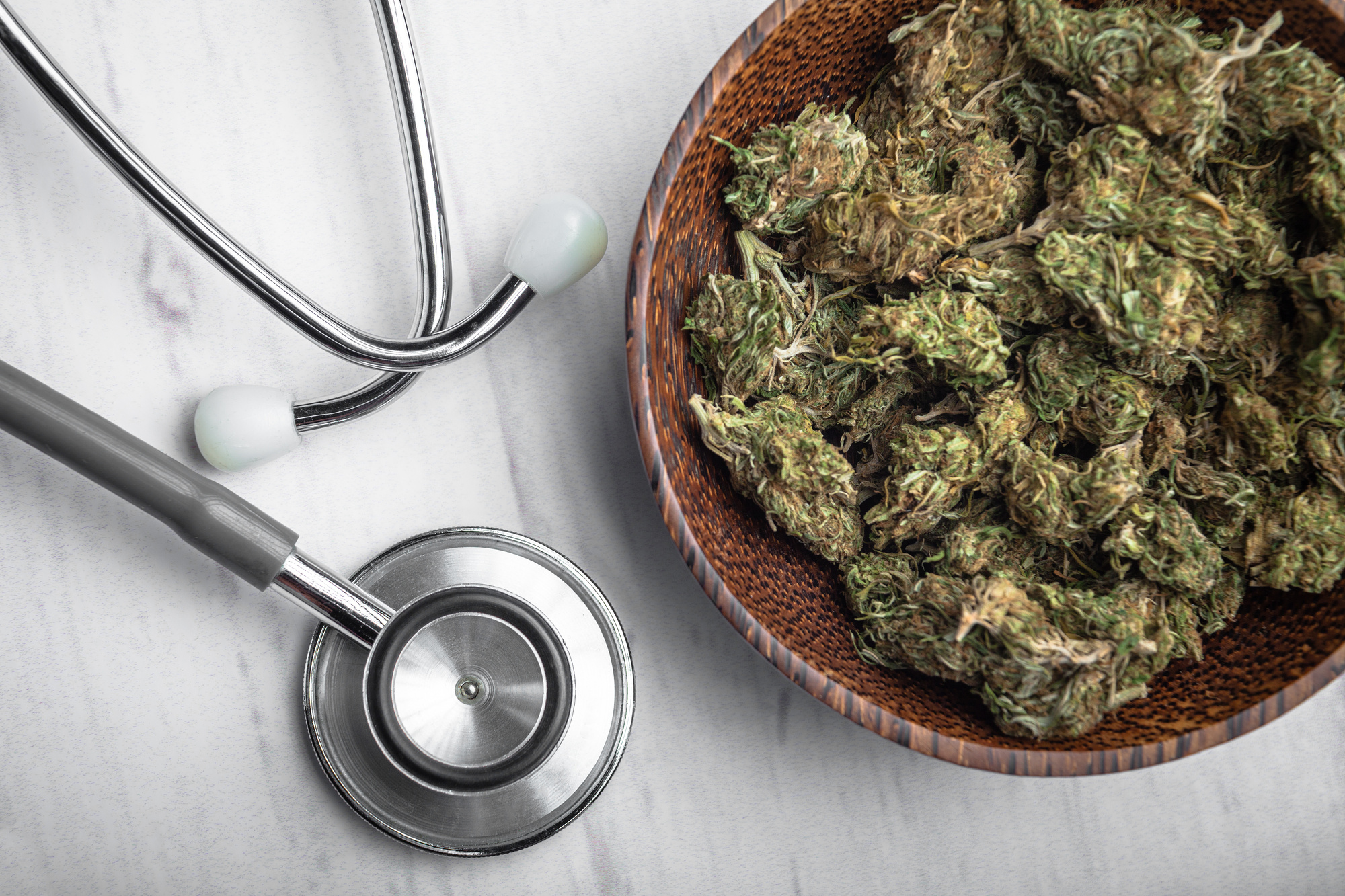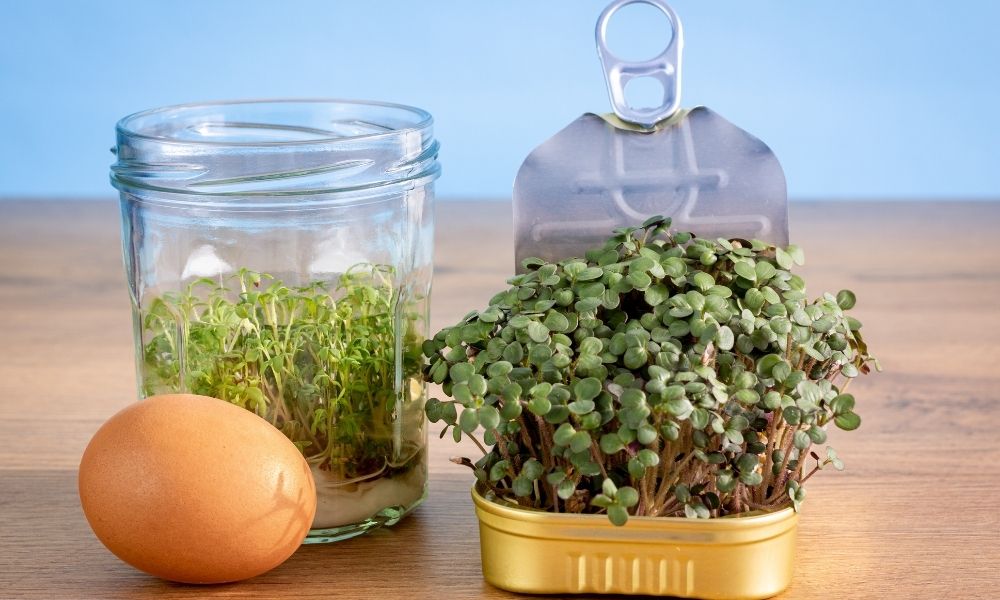Weed. If you’ve been alive in the last 50 years, you would have heard about weed or marijuana in both the extremely negative, and more recently, extremely positive connotations.
However, are you actually aware of the host of chemicals and different substances that the plant carries? It’s not as simple as “when I ingest this, I will get high.”
There are many different types of weed, as well as different terminologies depending on the stage of processing the plant is going through. For example, marijuana is the name used to refer to eh flowers, leaves, stems, and dried seeds of the cannabis plant. On the other hand, “weed” is what you’d call the method of preparation and the kind of cannabis plant used.
If you can’t differentiate between the cannabis plant and a petunia flower, no worries. You’ve come to the right place. Keep on reading for our thorough breakdown of the basics of the cannabis plant, the types of THC, and the specific benefits of each one.
What Is THC?
Before taking our deep dive into the world of marijuana and its strains, let’s make sure we have a basic understanding of what THC is.
In the simplest of terms, THC is short for delta-9-tetrahydrocannabinol or Δ-9-tetrahydrocannabinol. THC is the key active ingredient in weed, and it’s most known for its psychoactive effects. The common psychoactive effects are an alteration in mood, cognizance, alertness, and cognitive functioning.
On the other side of the chemical spectrum, we have CBD. CBD, also known as cannabidiol, is a big component of the marijuana plant. Yet, its consumption leads to some relaxation effects without any psychoactive elements, unlike THC. Moreover, CBD can have pain-relieving qualities.
Generally speaking, the “stronger” the type of weed, the higher the ratio of THC to CBD in the plant. This translates into a lot of THC, with minimal CBD. In well-balanced plants, you can get an even ratio of CBD and THC, which allows the CBD to counteract the psychoactive effects of THC. How THCa Diamonds MADE
The Basics of Cannabis: Indica vs. Sativa
You might have heard about the “Indica” vs. “Sativa” divide when it comes to cannabis consumption. The general market understanding is as follows: Indica strains are considered to have sedating effects, with the marketing geared towards linking it to a relaxing movie or nightcap before going to bed.
On the other hand, the “Sativa” strains are considered to be energizing, with qualities that uplift the cerebral effects, so it’s better paired with social gatherings, creative projects, and physical activity.
There are also some hybrid strains that boast having the right mix of Indica and Sativa effects.
Yet, it’s critical to understand that while the popular assumption for Indica is relaxation and Sativa is energy, that doesn’t necessarily have to apply to your own personal usage.
The latest research shows that it’s more about the chemical compounds in each strain, like cannabinoids and terpenes, that will determine the majority of the effects you’ll feel, not the type of strain itself. After all, the origins of the distinction between Indica and Sativa originated in botany, not its chemical effects.
Unfortunately, the mainstream cannabis culture still holds firm to the belief that it’s all about the strains, and the hybrids such as pineapple cannabis when you’re looking for particular effects. When you go to any dispensary, it’s more common to hear the budtender ask you about your favorite strain, and give out strain recommendations, instead of a breakdown of THC vs. CBD.
But, how about THC and CBD? what are their different effects? Well, we’re more than glad you asked.
CBD and THC: The Main Divide
We can’t disregard the effects of a variety of factors when it comes to the effects of cannabis strains. Yet, the bulk of the driving force behind those effects is the cannabinoids and terpenes in the strains or the mixture of chemical compounds in the plant.
Let’s start with the cannabinoids.
Cannabinoids
THC and CBD are the most popular cannabinoids, and they’re the key chemicals responsible for the cannabis plant’s ability to provide recreational and therapeutic effects.
- CBD: Cannabidiol is a non-psychoactive compound that’s been seen to calm down inflammation, pain, as well as alleviate anxiety and other common ailments.
- THC: Delta-9-tetrahydrocannabinol tends to make us high, crank up our hunger cues, and relieve pain and nausea.
It’s important to know that the cannabis plant actually contains a wide host of different cannabinoids, but we’re focusing only on THC and CBD because they’re the most common ones used in today’s market, and they’re the most well-researched out of the bunch.
Choosing Your Cannabis Selection
You can have an easier time choosing the right product for you depending on the following guideline of different cannabinoid profiles.
- The THC-dominant Strains: If you’re looking for a strong euphoric experience or you’re trying to reduce pain, insomnia, or even anxiety and depression, then you’ll want to experiment with THC-dominant strains.
- The CBD-dominant Strains: If you’re experiencing high levels of anxiety when you’re using a THC-dominant strain, you can always shift to a CBD-dominant one. Also, if you’re trying to avoid getting high with the pain-relieving qualities still present, a CBD-dominant product might be better for you.
- The Balanced THC/CBD Strains: Providing mild euphoria with symptom relief, the balanced THC/CBD strains can be a great starting point for those wanting a gentle introduction to the high associated with cannabis consumption.
You’ll want to take a close look at your product labels so you can pick the right one for you, as well as familiarize yourself with the dosing instructions.
Cannabis Terpenes
The other factor affecting the makeup of the cannabis product will be the terpenes.
Those are aromatic oils that are produced from the same glands that secrete cannabinoids (THC and CBD). It’s responsible for giving the cannabis product a distinctive flavor, like berry, citrus, mint, and pine amongst other options.
In addition to adding flavor, terpenes are found to play an important role in differentiating between the effects of different cannabis strains. There are ones that promote focus and energy, and others that are in favor of relaxation and stress-relief.
Types of THC: The Breakdown
Now that we’ve got a solid foundational understanding of what the cannabis plant is all about, it’s time to start our exploration of the different types of THC.
There are four common types of THC chemicals that are present in the cannabis plant. Those are known as Delta-9 THC, Delta-8 THC, THCA, and THCV.
1. Delta-9 THC
When you hear about THC, it’s most likely referring to Delta-9 THC, which is the main psychoactive chemical compound of the cannabis plant.
This one can be found in both the female and male editions of the cannabis plant, though the female plants tend to carry higher concentrations of THC. Interestingly enough, when you look at THC in its raw form (which is THCA), it has no psychoactive qualities whatsoever.
Once the decarboxylation happens, with the heat changing the original molecule into a perfect fit for our cannabinoid receptors in our body, turning into Delta-9 THC, only then would it be able to produce a “high,” that euphoric feeling.
Similar to Delta 8, Delta 9 products are used in edibles, cookies, gummies, and vaping syrups. There are many different types of flavors that are used along with these components. For example, both components can be used in vaping such as delta 8 and delta-9 berry syrups.
The benefits of Delta-9 THC can be rather numerous, but here are some of the most common ones:
- Relieves pain
- Antibacterial properties
- Increases appetite
- Improves sleep
- Relieves anxiety
- Has anti-convulsant or anti-seizure properties
- Promotes brain growth
- Helps PTSD sufferers
- Acts as a bronchodilator: opens the airways and helps conditions like asthma
- Relaxes the muscles
- Antioxidant effects
- Helps protect brain cells
All of those benefits have been shown in research, and in both laboratory conditions, and through anecdotal evidence. THC-O, also known as THC-O acetate, is a relatively new and potent cannabinoid that has gained attention in recent years. In comparison to Delta-9 THC, THC-O exhibits a significantly higher potency, making it more potent than traditional Delta-9 THC. This exact match anchor, THC-O vs Delta 9, highlights the key comparison between these two compounds and their varying effects on the human body.
2. Delta-8 THC
When you have Delta-9 THC on hand, and leave it to age while being exposed to oxygen, the chemical is converted to Delta-8 THC. The oxidation process results in a stable cannabinoid when it’s exposed to air.
Admittedly, Delta-8 THC isn’t as potent as its sibling, Delta-9 THC, however, it still would produce a high that’s less intense than the one experienced with Delta-9 THC. Users have reported feelings of an energetic and clear-headed high. But, you’ll want to pick the right Delta-8 THC product to get good results, so click here to get some.
The health benefits of Delta-8 THC can be a bit similar to Delta-9 THC, with small differences:
- Can potentially reduce the size of tumors
- Neuroprotectant qualities
- Stimulates appetite
- Analgesic properties
- Reduces nausea and vomiting
- Helps the release of acetylcholine, which is involved in memory and learning functions
The source of Delta-8 THC is the breaking down of Delta-9 THC. Thus, you can get it from different strains. Just make sure to check the labeling and quantities in each product.
3. THCA
If you’re looking for a type of THC that has no mind-altering or psychoactive properties at all, then you’ll be pleased with the THCA. It naturally exists in the flowers, stems, and leaves of the cannabic plant.
The reason behind the psychoactive qualities of THC is due to the chemical molecule’s ability to attach to CB1 receptors in the human brain and nervous system. When it comes to THCA, the structure itself is different, and wouldn’t fit with those receptors.
Yet, THCA is the mother of all other types of THC. By adding heat and light exposure to THCA, you can get the three other types of THC.
The benefits of THCA aren’t tied to its overarching function as the chemical parent of Delta-8 THC, Delta-9 THC, and THCV. It has its own therapeutic benefits, as it’s been found by research to be beneficial in helping alleviate the following conditions:
- Inflammation (swelling of muscles or other tissues)
- Fibromyalgia
- Diabetes
- Arthritis
- Epilepsy
- Chronic pain
- Ailments that result in muscle spasms like ALS and MS
- Nausea and loss of appetite
When it comes to getting the biggest amount of therapeutic benefits from THCA, you’ll want to actually eat or ingest the plant in the rawest form you can manage.
Whether you’re a fan of adding it to smoothies or even adding them to a salad, the least manipulated form would be the most beneficial for you.
4. THCV
As we’ve previously stated, THCV is a byproduct of breaking down THCA.
It’s similar to Delta-9 THC in some aspects but does have some different qualities. For instance, it would give you any mind-altering effects if used in small doses. On the other hand, if you’re getting a strain that’s high in THCV, then the effects will transform, and you’ll enjoy a clear high. And, while the “high” effects of THCV would last as long as Delta-9 THC’s “high,” it’ll hit you quicker.
All of those qualities sound rather similar to Delta-9 THC, so what’s the actual difference?
Well, you’ll find that THCV can act as an appetite suppressant, instead of making you hungry as Delta-9 THC can. It works by limiting the specialized actions of Delta-9 THC that target appetite stimulation. Therefore, if losing weight is something you’re considering, you’ll want to aim for strains that are high in THCV, or even CBD, instead of Delta-9 THC.
THCV can also have helping effects with these illnesses:
- Tremors from Parkinson’s and ALS
- Brain lesions from late-stage Parkinson’s
- Epilepsy
- Alzheimer’s
- Pain and swelling (inflammation)
- Diabetes, especially type II
- Stimulates bone growth, which aids with Osteoporosis and other similar conditions
- Anxiety
As always, remember to start slow with lower doses, and work your way up after knowing exactly how your own body will react to the cannabis product.
Unlocking the World of THC
We know how overwhelming it can be to look for a THC product online (or in a dispensary) for the first time. The new strains and ratios of cannabinoids aren’t slowing down any time soon either.
Hopefully, our guide on cannabinoids, the cannabis plant, as well as the different types of THC and their benefits was helpful to you in navigating the market.
When in doubt, remember to check the labeling and to start with a lower dose than you think you’ll need. This way you can experiment safely and have a good time.









